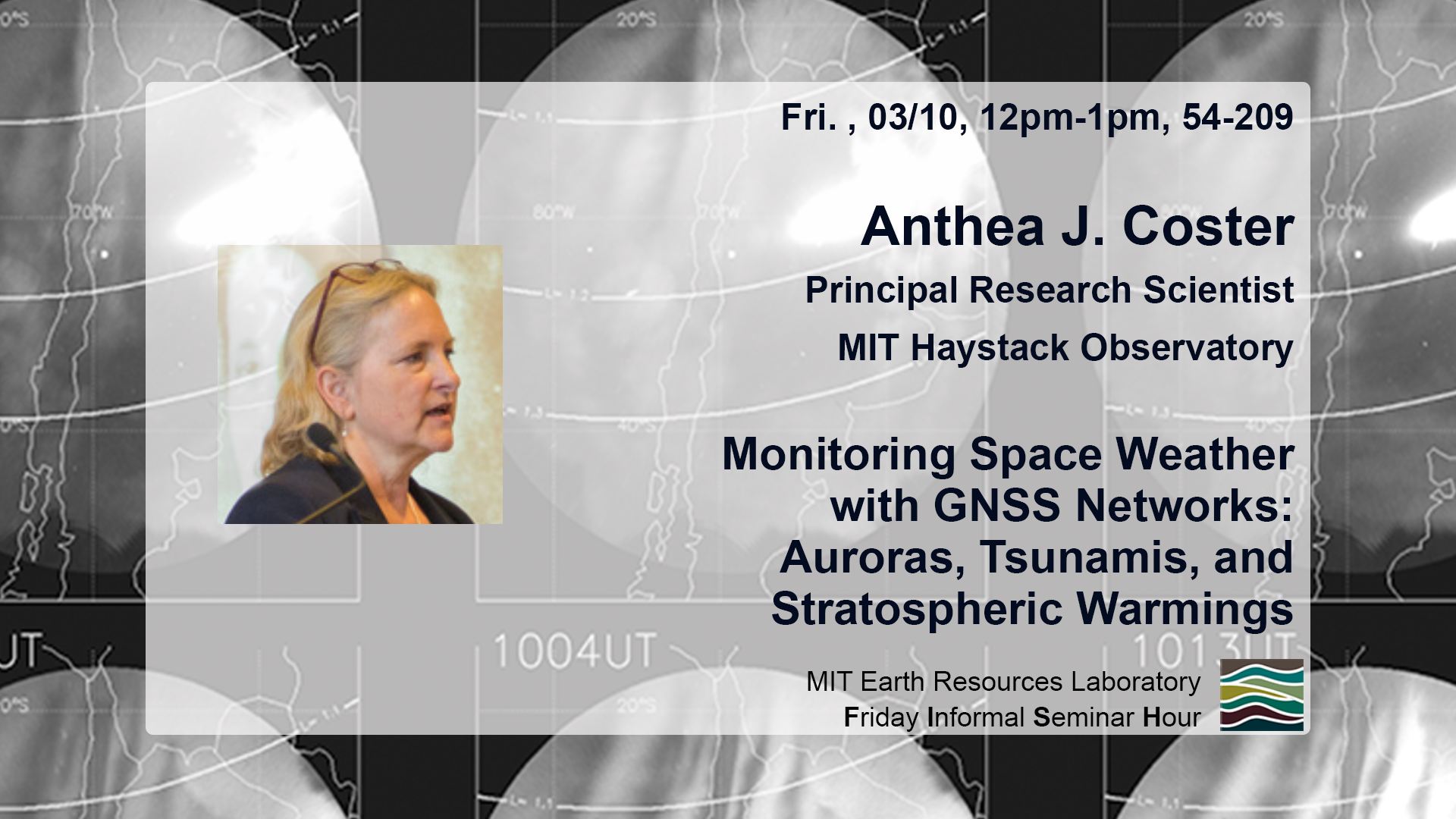Mar 10, 2017 - 12:00 PM to 1:00 PM EST
Speaker:
Dr. Anthea J. Coster (MIT)

Dr. Anthea J. Coster, Princple Research Scientists and Assistant Director of the MIT Haystack Observatory, presents "Monitoring Space Weather with GNSS Networks: Auroras, Tsunamis, and Stratospheric Warmings".
"In October 2015, The White House Office of Science and Technology Policy (OSTP) released a National Space Weather Strategy (Strategy) and an accompanying National Space Weather Action Plan (Action Plan) aimed at improving the Nation’s ability to prepare, avoid, mitigate, respond to, and recover from the potentially devastating impacts of space weather events. In this talk, we will define what is meant by space weather and describe the primary phenomena that produce potential space weather impacts on GNSS applications in particular: the introduction of large gradients in the ionospheric total electron content (TEC); the rapid variation of a signal’s amplitude and/or phase (scintillation); and/or the sudden increase in background noise. Each of these phenomena will be illustrated in this talk utilizing MIT Haystack Observatory’s on-line Total Electron Content (TEC) global maps. These maps are freely available and hosted on-line through the Madrigal database (http://madrigal.haystack.mit.edu/madrigal/) . Processed TEC data extends back to the year 2000 and consists of vertical TEC values in bins of 1 degree bins of latitude and longitude every 5 minutes where observations are available. Currently over 6000 GNSS sites are being downloaded on a daily basis and new enhanced TEC and differential TEC data products are now being produced. We will demonstrate how this data set has been used to monitor ionospheric signatures of storm enhanced density features, auroral structures, stratospheric warmings, and tsunamis. We will conclude by summarizing some of the deficiencies of the current system for addressing some of the goals of space weather monitoring, and discuss potential plans for rectifying these deficiencies."Location:
54-209